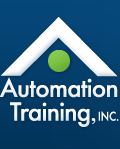 |
 |
 |
|
PID Maintenance, Configuration, and Troubleshooting Length: 32 Hours Course Number: PLC-P201 Maximum Participants: 10 Students |
| Software Used: | RSLogix / Studio 5000 in Windows 10 | ||
| Course Description: | The purpose of this course is to familiarize students with the major PID tuning methods, and to troubleshoot PID loops. We will cover both position based, and velocity based PID instructions, and the operating modes available for each instruction. As an option, the course will be delivered using the PID and PIDE instructions, or with PlantPAx. | ||
| Prerequisites: | Students who take this course should have previously completed ControlLogix Level 1 and PlantPAx (if you choose that option). Equivalent knowledge and experience is sufficient. | ||
| Course Objectives: |
|
||
| Outline: | 1. Introduction
9. Function Block PIDE (Enhanced PID)
12. PIDE Lab – Using the enhanced PID, tune various loops with various scenarios on the PID Simulator 13. Conclusion
|
||
<< Back to Courses Page | Return to the top ^^ | Printable Version